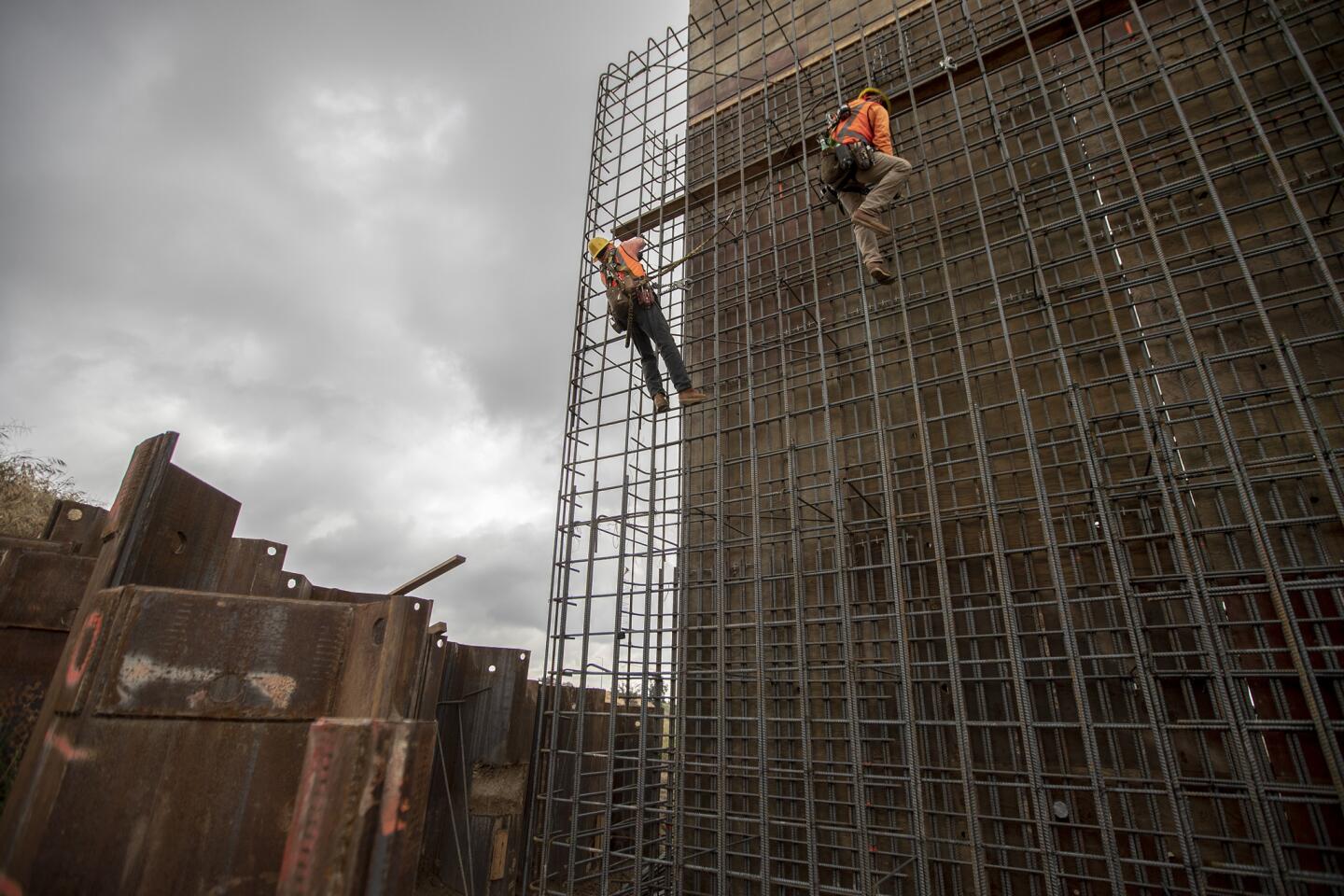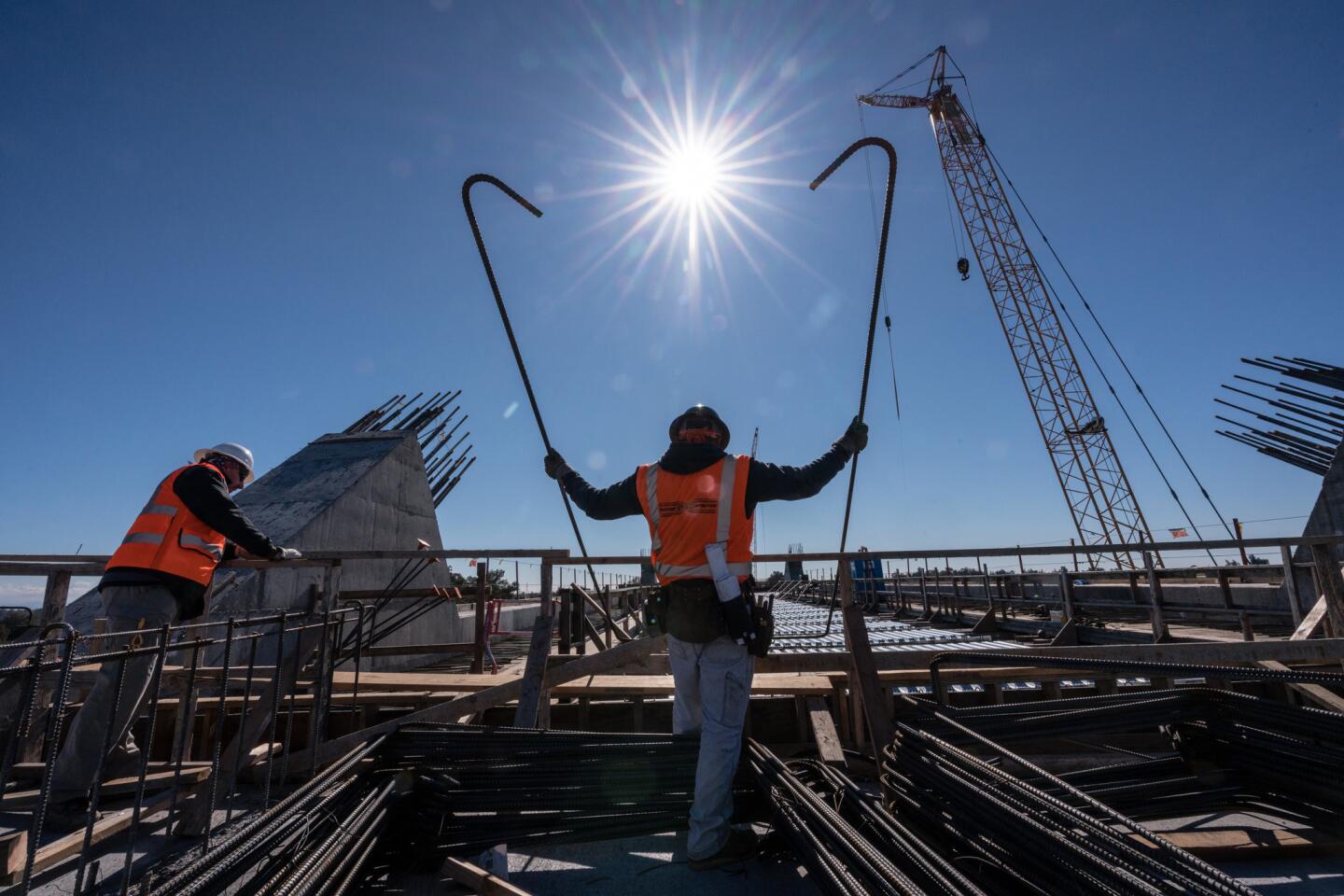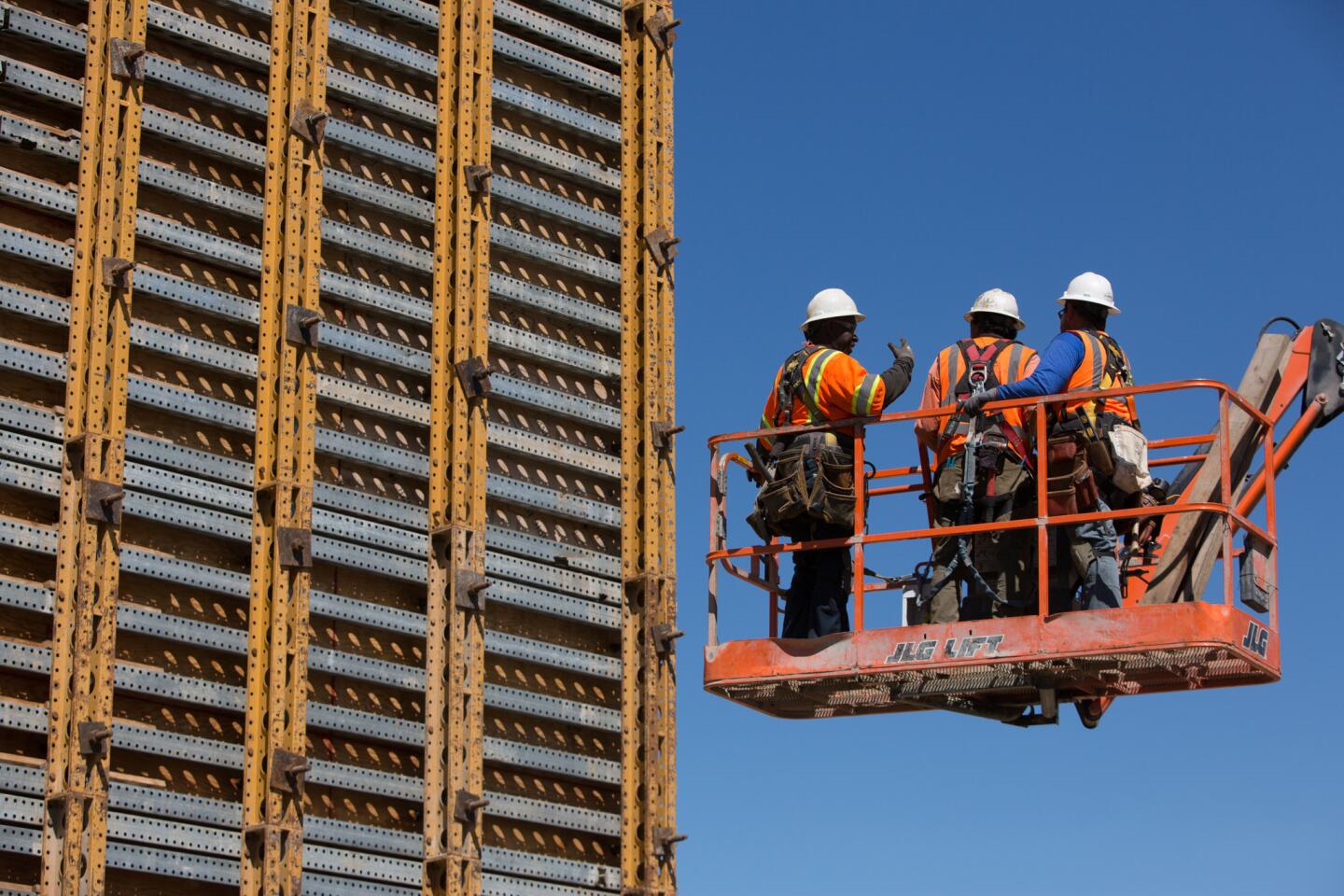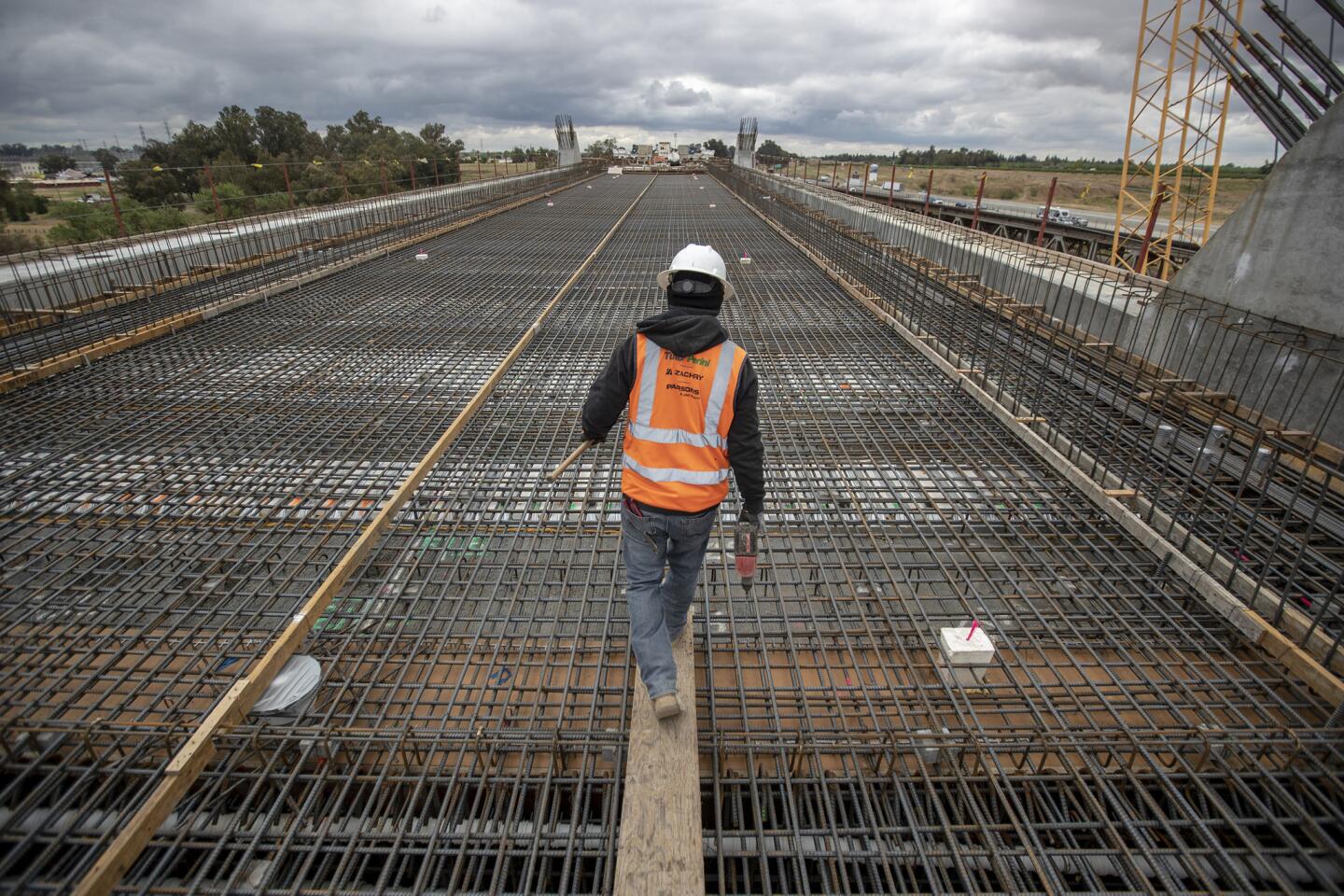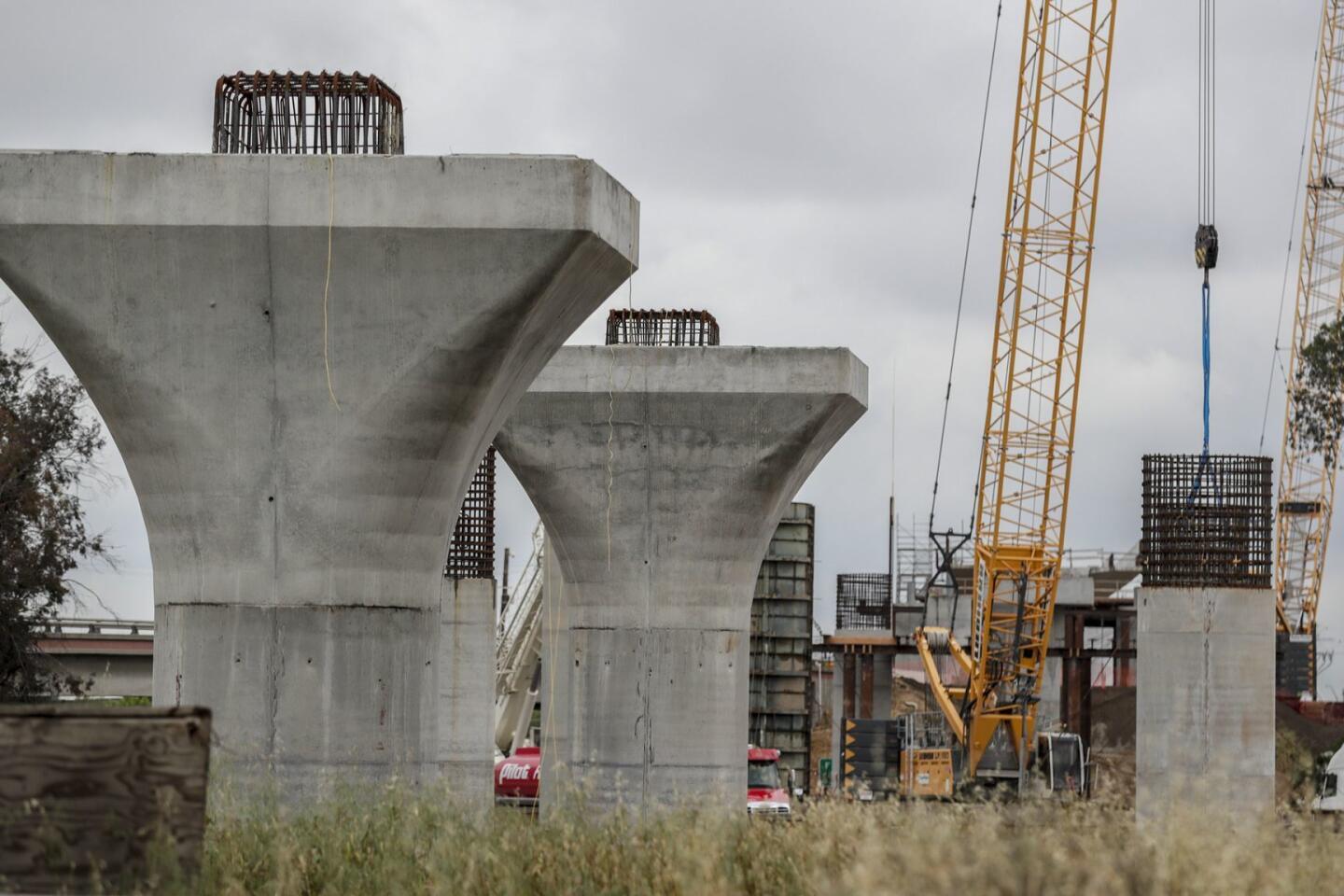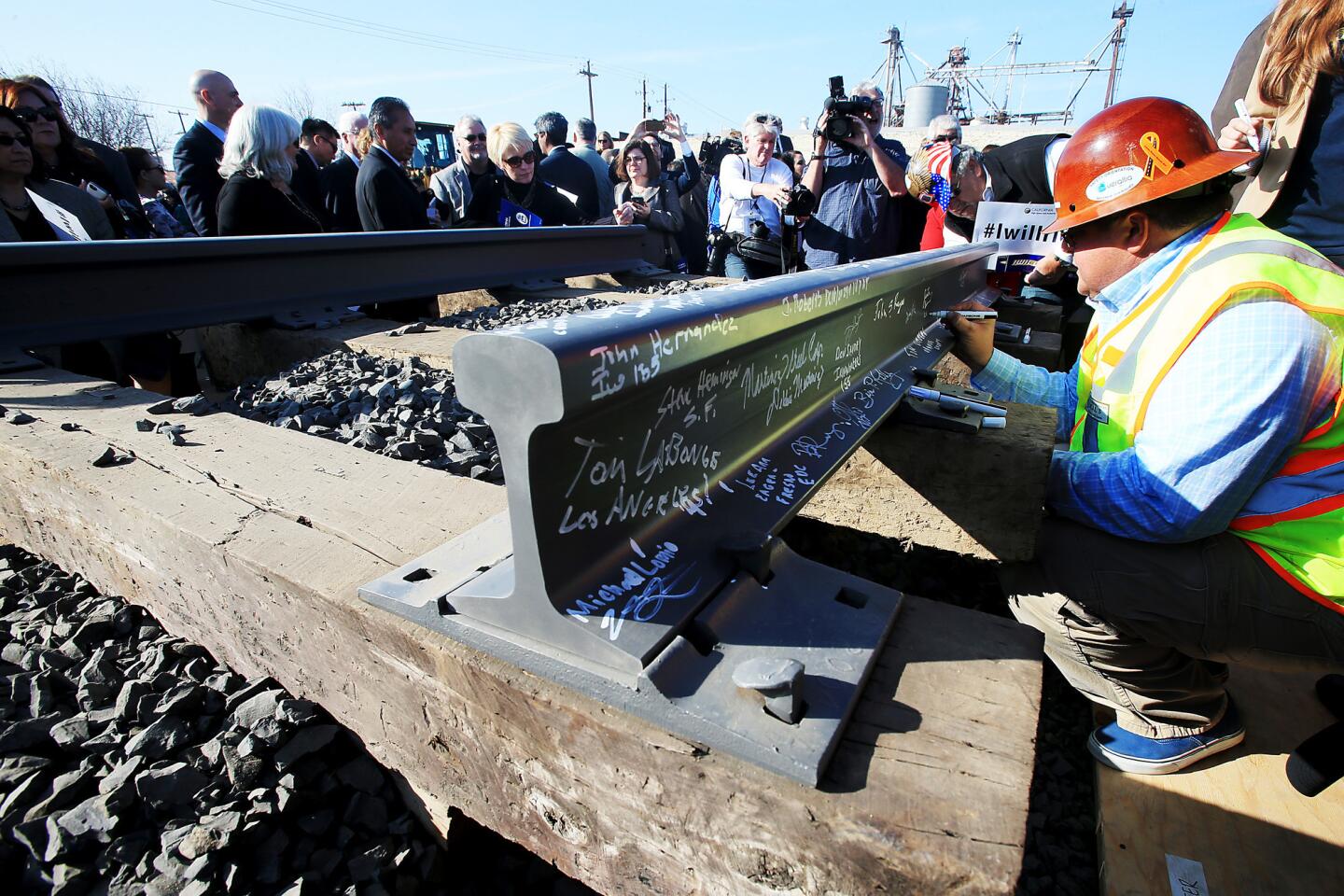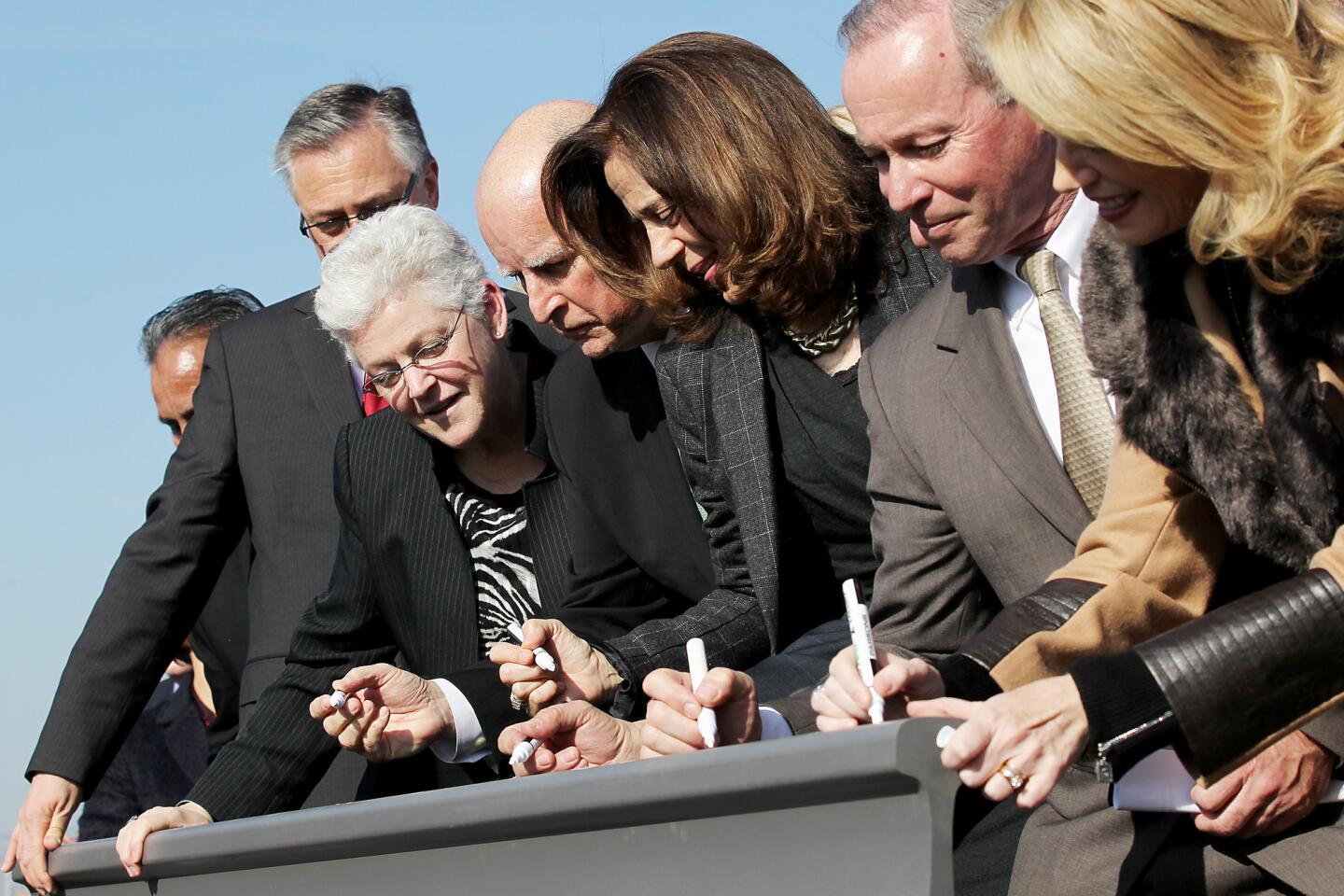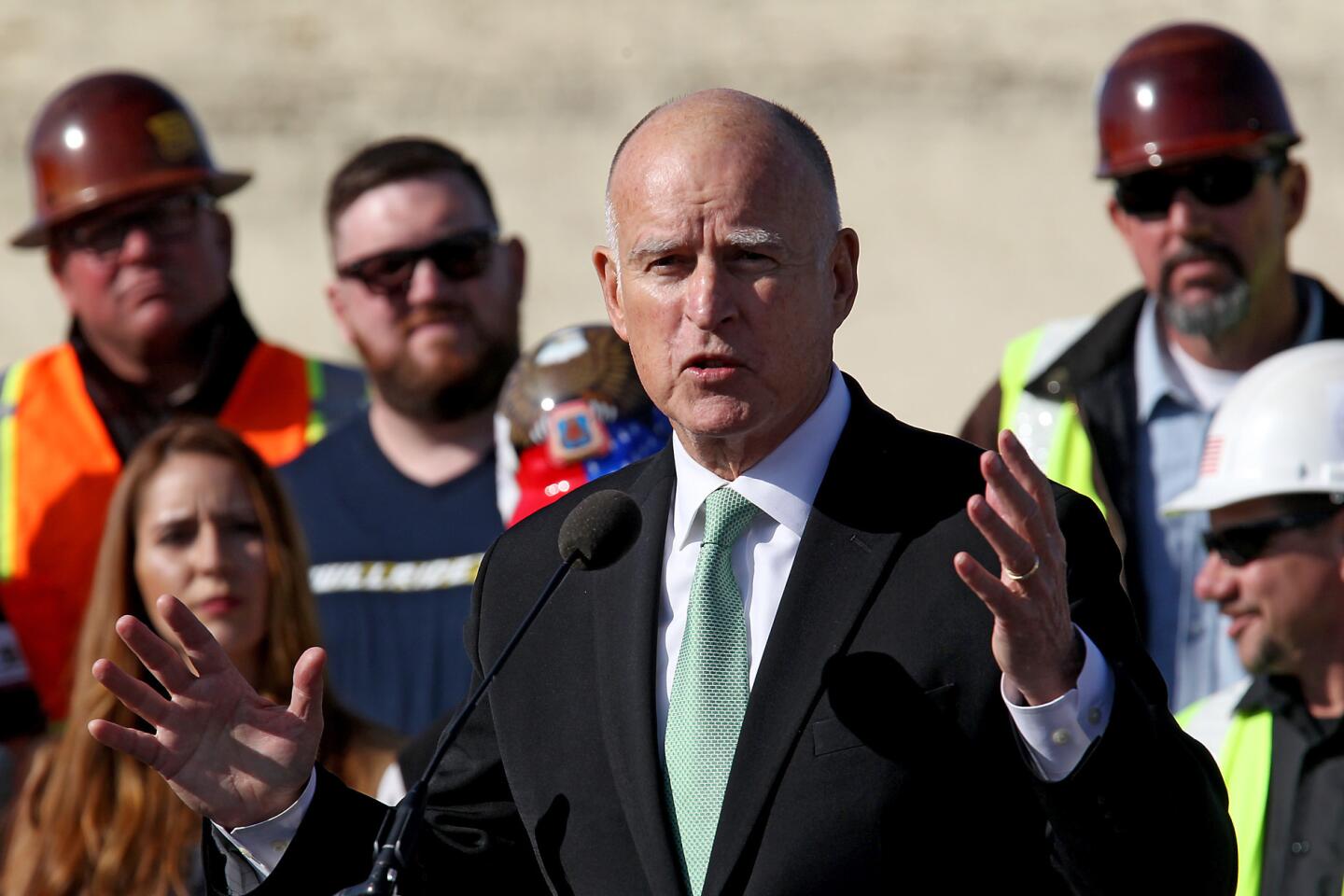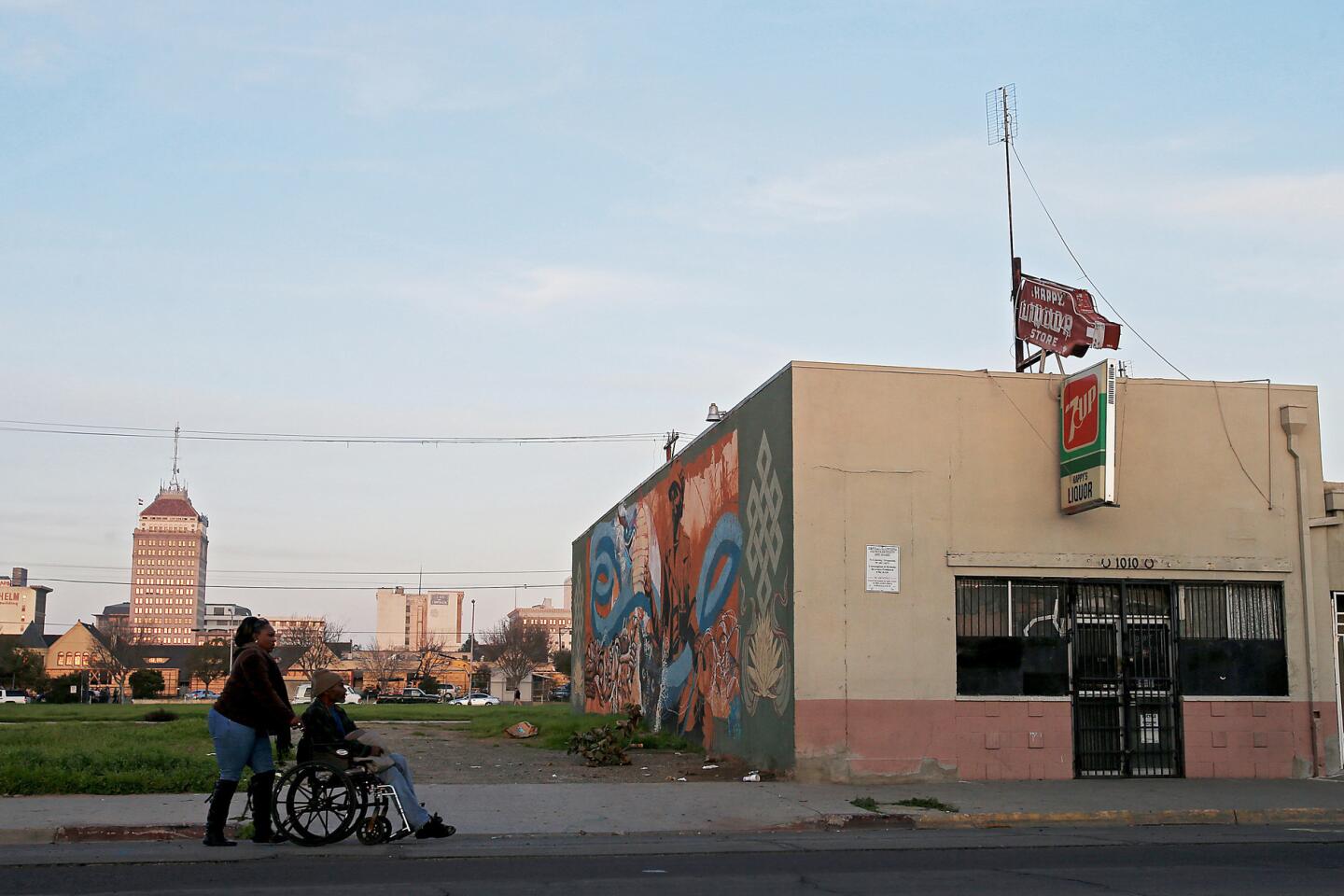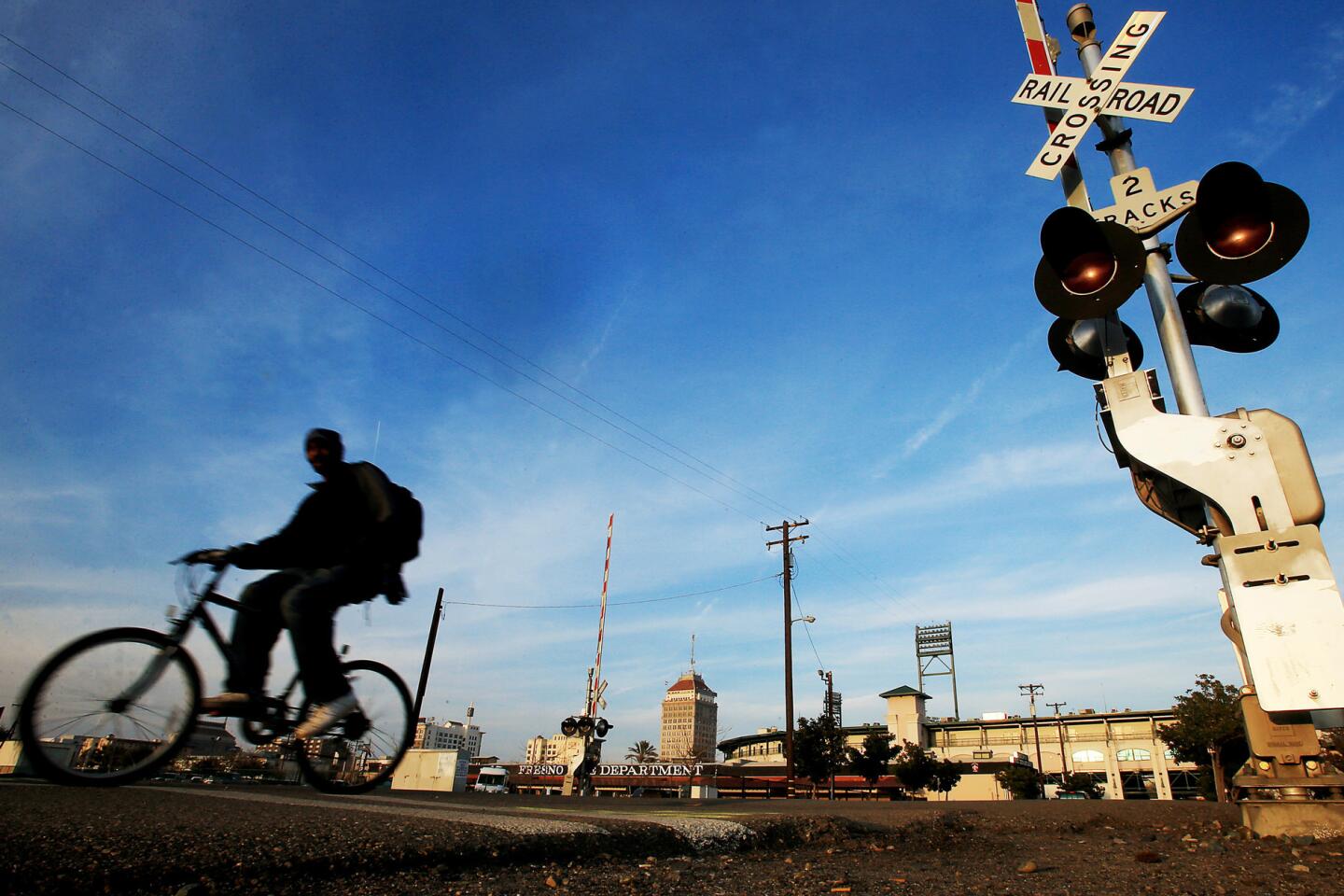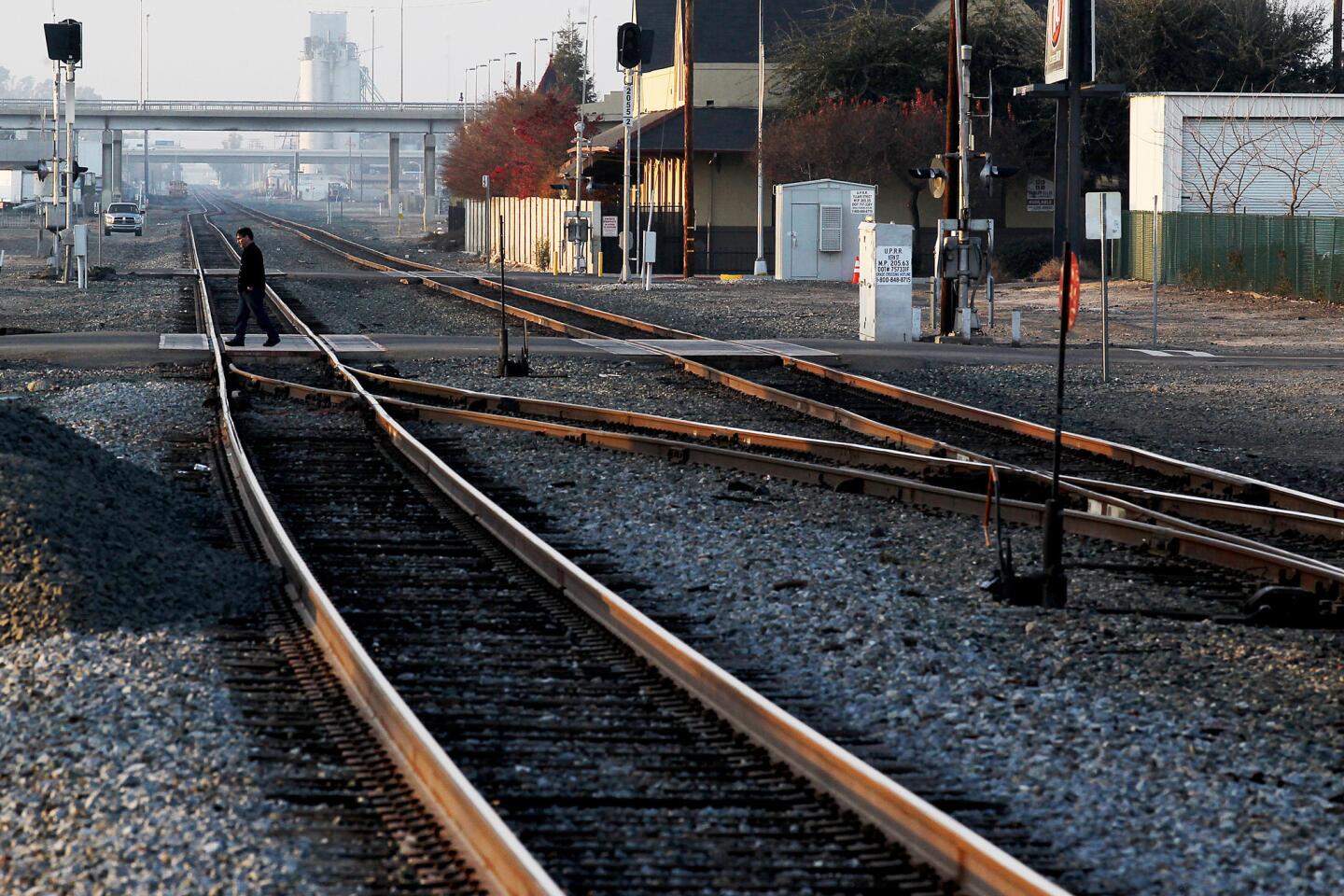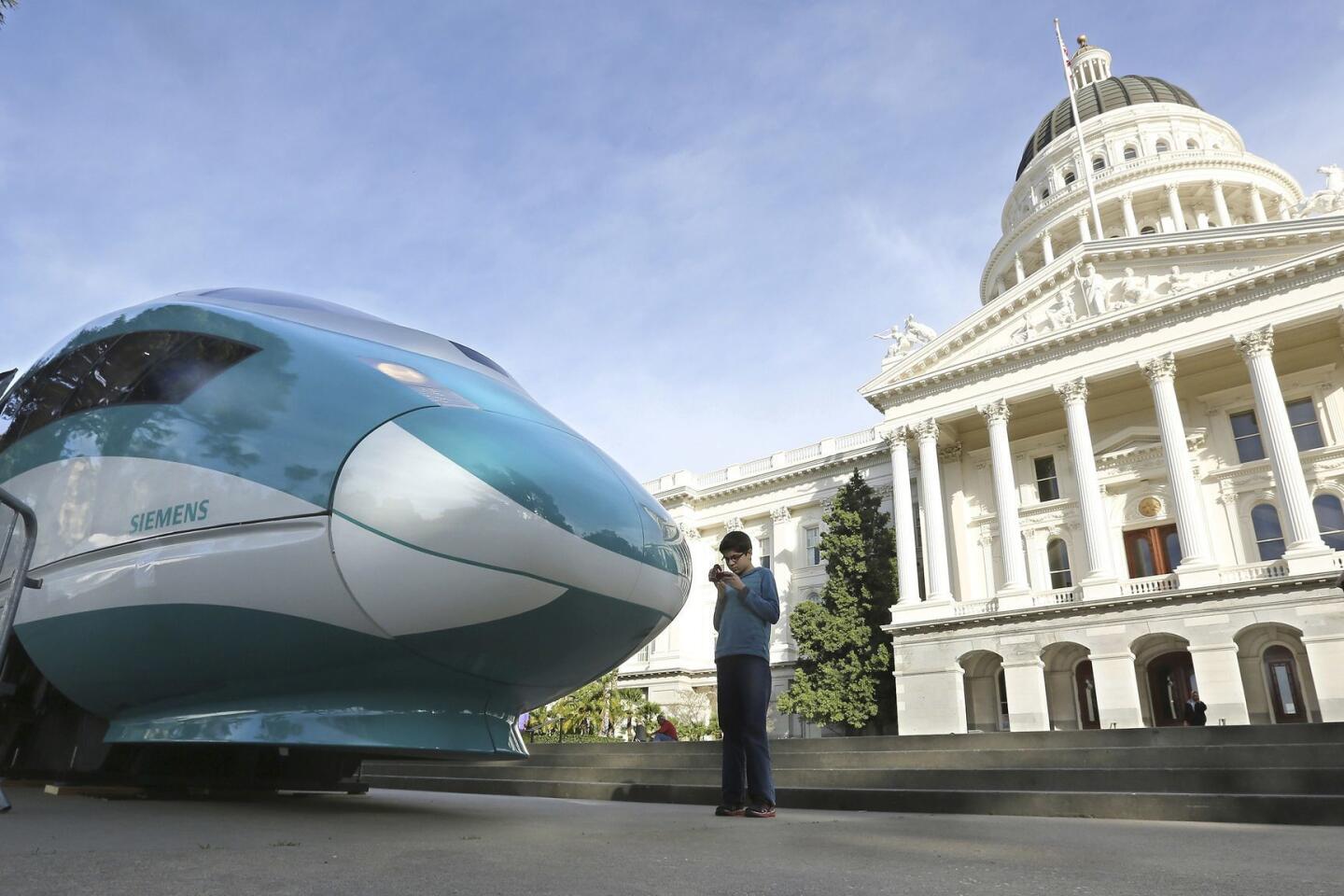Trump administration cancels $929-million grant for California bullet train
The Trump administration transformed its threats against the California bullet train project into a sour reality Thursday, terminating a $929-million grant for construction in the Central Valley.
While loss of the money poses a potentially devastating hit to the project, state officials said, no immediate construction changes are planned because the federal government’s action could be reversed in future legal action.
For the record:
5:30 p.m. May 16, 2019A previous version of this article referred once to the state’s loss of $929 billion. As stated elsewhere in the article, the grant terminated by the Trump administration was $929 million.
Termination of the 2010 grant was based on the state’s multiple failures to forecast accurate schedules, report key milestones and show that it can meet deadlines to complete work by 2022, the Federal Railroad Administration said in a 25-page letter announcing its decision.
The California High-Speed Rail Authority “is chronically behind in project construction activities and has not been able to correct or mitigate its deficiencies,” said Ronald Batory, chief of the federal agency.
The railroad administration’s letter notes that the agency rejected every quarterly budget that the state authority submitted since late 2016, repeatedly admonishing the state for “deficiencies and errors” in its documents. The letter alleges the state made ineligible expenditures from the grants, including giving a bonus to consultants for meeting the terms of the grant and paying for expenses “related to a consultant’s name change.”
Even more troubling for the project is a warning, reiterated Thursday, that federal officials are looking into recapturing $2.5 billion in another grant that the state already has spent. U.S. Transportation Secretary Elaine Chao has said the government has a right to get repayment of that money, based on reductions in the original scope of the rail system. Chao previously called the cutbacks a “classic bait and switch.”
In a statement, the Federal Railroad Administration said it was still weighing “all options” on asking California to reimburse the $2.5 billion. The Transportation Department theoretically could withhold highway or transit funds from other programs to recoup the money, putting the state in the difficult position of having to cover those cutbacks.
The Federal Railroad Administration cut off communications with the state rail authority in February, a sign that relations were worsening between the two partners, leading to Thursday’s effective announcement of a divorce.
FULL COVERAGE: California’s troubled high-speed rail project »
High-speed rail supporters condemned the federal action. Robbie Hunter, president of the State Building and Construction Trades Council, termed it a blow to working families. State Sen. Jim Beall (D-San Jose) called it an “irrational decision.”
But Rep. Kevin McCarthy (R-Bakersfield), House Republican leader, said the termination “ensures that we move on from the failed boondoggle.”
When the federal government initially notified the state in March that it intended to terminate the $929-million grant, it cited Gov. Gavin Newsom’s statements that California lacked a plan and funds to complete the statewide system. In his State of the State address, Newsom appeared to provide an opening to Trump officials. The governor vowed to scale back the $79-billion mega-project but later reversed course and said there would be no cutbacks.
“California has abandoned its original vision of a high-speed passenger rail service connecting San Francisco and Los Angeles, which was essential to its applications for FRA grant funding,” the Federal Railroad Administration said in a statement issued Thursday along with the letter.
In the 32nd footnote of the letter, the railroad administration said it may solicit new applications for the grant funds from other rail projects, implying the money could go to other states.
Newsom reacted strongly, vowing a legal battle.
“The Trump administration’s action is illegal and a direct assault on California, our green infrastructure, and the thousands of Central Valley workers who are building this project,” the governor said in a statement.
“Just as we have seen from the Trump administration’s attacks on our clean air standards, our immigrant communities and in countless other areas, the Trump administration is trying to exact political retribution on our state. This is California’s money, appropriated by Congress, and we will vigorously defend it in court.”
The loss of the $929 million and the possible loss of the additional $2.5 billion would clearly jeopardize Newsom’s plan for a partial operating system that runs from Bakersfield to Merced. The plan was outlined May 1 in a project update, which projected that by 2029 the state could be operating electrically powered high-speed trains. The plan would cost $20.4 billion.
To pay for that, the California High-Speed Rail Authority is counting on funding of $20.4 billion to $23.4 billion by 2030, depending on how much money it gets from the state’s cap-and-trade auction system for greenhouse gas emission allowances. Without the $929 million, the state could fall short of money needed to build the partial system at the low end of expected funding.
Russell Fong, the state agency’s chief financial officer for the last six years, said in an interview that California did not plan to tap the $929 million until 2021 and that there is a good possibility that the state would get more than the minimum estimated funds from the greenhouse gas auctions.
“It is still a big hit to the project,” Fong said. “It is devastating. But if cap and trade comes in a little above the low end, we will have adequate funds.”
But if the state runs out of financing, it would probably see the Central Valley partial operating system cut back further, possibly not reaching the final construction section to Bakersfield. If so, it would unravel the ridership plans, reducing revenues and leaving the state with the problem of subsidizing the system.
Ten years after voters approved it, the full-scale plan for a Los Angeles-to-San Francisco system is at least $46 billion over budget and at least a decade behind schedule. A state audit in November blamed flawed decision making, organizational faults and poor contract management by the California High-Speed Rail Authority. Many don’t believe the train can complete the trip from Los Angeles to San Francisco in the 2 hours and 40 minutes mandated in the bond measure.
The rail authority’s most recent business report projected that costs for current construction in the Central Valley have jumped an additional $1.8 billion, to $12.4 billion, for a segment that was originally supposed to cost about $6 billion. The partial operating system would start running in 2028, which just two years ago was the deadline for the entire Los Angeles-to-San Francisco line.
Newsom has sought more direct state control of the project, which has been managed largely by outside consultants. In April, The Times revealed how excess reliance on these consultants has added to the project’s mismanagement. Less than a week later, Newsom announced he would scale back use of these consultants but push ahead with the project.
More to Read
Sign up for Essential California
The most important California stories and recommendations in your inbox every morning.
You may occasionally receive promotional content from the Los Angeles Times.
